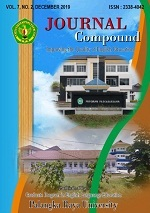..::ADDITIONAL MENU::..
Focus & Scope Editorial Team Reviewer Author Guidelines Peer Review Process Publication Ethics Online Submissions Copyright Notice Plagiarism Screening Indexing Author Fees Open Access Policy ..::TEMPLATE::..

..::INFORMATION::..
Reader Author Librarians ..::TOOLS::..



..::INDEXING::..
 More...
More... ..::VISITORS::..




